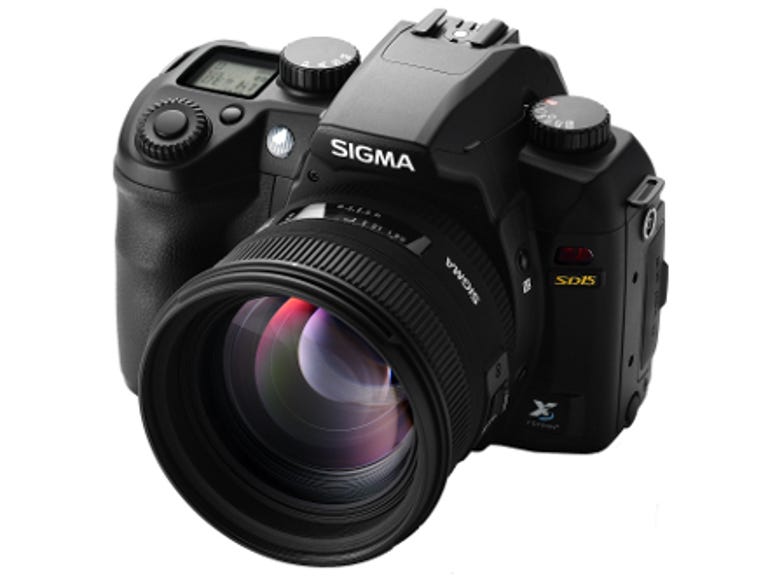 Why You Can Trust CNET
Why You Can Trust CNET Sigma SD15 review: Sigma SD15
The Sigma SD15 is an oddly eccentric fourth attempt at a high-end digital SLR by a manufacturer still better known for its accessories. Good results are achievable, but, by golly, you have to work for them.
Sigma is still better known for its lenses than its cameras. The SD15 digital SLR, an update of 2006's SD14, was announced almost two years ago. But it has only just made it to market, at a body-only price of around £800, which is usually the kind of news that sets alarm bells ringing.
The Good
The Bad
The Bottom Line
Strange goings-on
Another unusual aspect of this camera is its manufacturer's continued deployment of a 14-megapixel Foveon X3 CMOS sensor, which captures colour in a different way to conventional chips.
The SD15's feature set also feels curiously old-fashioned: there's no live view feature, allowing the 76mm (3-inch), 460,000-dot LCD screen to be used for shot composition; there's no video-capture capability; and there's no HDMI output either. Furthermore, although you can shoot JPEGs alongside raw images, you can't capture both in tandem.

As a concession to modernity, Sigma has adopted SD and SDHC cards as its storage media of choice, and overhauled the user interface to make it more user-friendly. The dedicated 'quick set' button proves a godsend, allowing compression levels, white balance, picture settings and colour modes to be rapidly tweaked on the fly, without you having to delve into the more expansive menu screens.
That said, there isn't the usual array of point-and-shoot auto and scene modes crammed around the shooting dial -- just the creative quartet of program, shutter priority, aperture priority and manual. Thus the dial itself looks rather sparse -- incomplete, even.
This is perhaps because Sigma has provided a second drive dial, which, unusually, doubles up as the power switch, on the other side of the camera. You use this dial to swap between single shots and continuous capture (up to 3 frames per second for up to 21 raw files), 2- and 10-second self-timer options, mirror-up and auto-bracketing functions.
Get to the point
The SD15 offers a five-point autofocus system. That's not a patch on the 51-point offerings to be found among Nikon's semi-professional dSLRs. In fact, it's closer to the sort of spec you'd find at the entry-level end of the market. Unsurprisingly then, busier scenes can confuse the AF, and we often found the camera had chosen to focus on the background rather than the intended subject.
Like its predecessors, the SD15 is a chunky, semi-professional beast with a dust-protected lens mount. At a body-only weight of 680g, it feels like it will withstand a few knocks with ease. Sigma boasts that its shutter is similarly durable, and can be used over 100,000 times. The camera's tank-like looks and brick-like weight, with the lens added, won't be to everyone's tastes.
Sensor and sensitivity
The Foveon X3 sensor is both this dSLR's main selling point and its Achilles heel. Sigma claims its triple-layered composition -- one silicon-embedded layer of photo detectors each for red, green and blue -- delivers more accurate colour reproduction, and, therefore, more life-like results.
That's a big claim, especially since, when you open up a fine-compression-level JPEG in Photoshop, the actual pixel count is closer to a mere 4.6 megapixels (the headline resolution divided by three -- one for each of those aforementioned layers).
The camera costs around £800 for the body only, and adding the two lenses that we had in for testing, a 24-70mm f/2.8 macro and stabilised 70-300mm f/4-5.6 zoom lens, will bring the total to nearly £1,600. That will leave some people feeling distinctly short-changed.
The SD15's battery life is good for around 500 shots, which is what we'd expect at this level. Light-sensitivity settings stretch from ISO 100 up to ISO 1,600, which feels modest. They can, however, be 'extended', via the camera's menus, to an equivalent ISO 50 and ISO 3,200. You might wish you hadn't bothered, though, as, over ISO 800, the results from the SD15 are alarmingly noisy.
The camera comes into its own when photographing still-life arrangements, portraits and nature scenes in better light. The subtleties of differing colour tones are then brought to the fore, and will almost certainly please fine-art photographers.
Verdict
The Sigma SD15 couldn't be described as a good-value all-round dSLR. If that's what you're in the market for, then look elsewhere -- at the Pentax K-7 to give but one example. Ultimately, the SD15 is a specialist tool that seems to lack a clear identity.
Edited by Charles Kloet
